#Filmic Precision
Explore tagged Tumblr posts
Text
Optical Film Market's Influence on the Future of Display Systems
The global optical film market size is anticipated to reach USD 48.35 billion by 2030, according to a new report by Grand View Research, Inc., growing at a CAGR of 8.7% over the forecast period. Increasing demand for consumer electronics devices is expected to significantly drive the industry during the forecast period. Increasing demand for better visibility, optimum brightness, and lower power consumption for illuminating automotive instrument panels and displays is creating lucrative opportunities for optical film in automotive display applications. In addition, properties, such aslight control & enhancement, increased brightness, improved contrast, better sunlight durability, and others, are propelling the product demand in various applications.
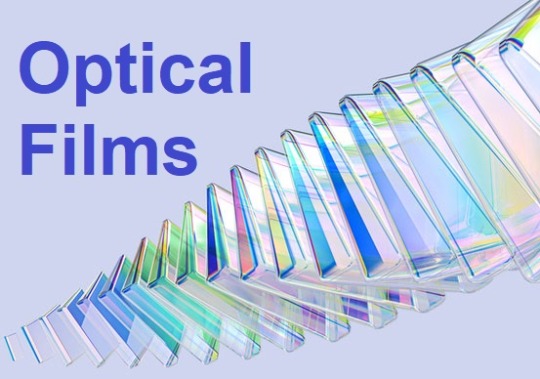
Optical Film Market Report Highlights
In terms of revenue, the polarizing film segment accounted for the maximum share in 2021. The segment is expected to grow further at a steady CAGRover the forecast period
The smartphones application segment accounted for a significant revenue share in 2021 and will retain its industry position throughout the forecast period
The rising middle-class population, shifting spending priorities, and changing consumption patterns towards more discretionary spending are driving the segment growth
The Asia Pacific region led the global industry and accounted for the largest share of the overall revenue in 2021
Strong manufacturing bases of consumer electronics companies and the presence of several end-use industries in the region are anticipated to fuel the product demand over the forecast period
For More Details or Sample Copy please visit link @: Optical Film Market Report
These applications include automotive displays, televisions, desktops & laptops, smartphones, tablets, signage & advertising display boards. Moreover, the rising adoption of digital & advertising display boards in commercial verticals, increasing infrastructural development, especially in emerging countries, and technological advancement in display products are projected to create product demand in signage & advertising display boards. Asia Pacific is anticipated to progress at the fastest CAGR over the forecast period. China led the APAC regional market in 2021 owing to the rising demand for the product in applications including automotive display, televisions, desktops & laptops, smartphones, tablets, signage & advertising display boards.
In addition, a well-established manufacturing base for consumer electronics in Taiwan, China, and South Korea is anticipated to provide further impetus to the region’s growth. However, the recent outbreak of COVID-19 in countries, such as India, China, and Japan,is impacting the product demand in signage & advertising display boards, smartphones, and otherapplications.Declining demand from end-use consumers, nationwide or partial city lowdown, and a slowdown in manufacturing activities as a result of the pandemic further hampered the region’s growth in the short term.
OpticalFilm #DisplayTechnology #VisualInnovation #ScreenEnhancement #FilmicPrecision #DisplaySolutions #VisualExcellence #TechTrends #DisplayQuality #FilmTechnology #VisualCommunication #InnovationInDisplay #ScreenInnovation #DisplayTech #ClarityInVision #VisualPerformance #DisplayFilm #OpticalInnovation #FilmMarket #HighPerformanceDisplays
#Optical Film#Display Technology#Visual Innovation#Screen Enhancement#Filmic Precision#Display Solutions#Visual Excellence#Tech Trends#Display Quality#Film Technology#Visual Communication#Innovation In Display#Screen Innovation#Display Tech#Clarity In Vision#Visual Performance#Display Film#Optical Innovation#Film Market#High Performance Displays
0 notes
Text
Photo Restoration Project - Part 1
A long time ago, Katrina sent me some old photos of her family I could restore. Her parents have been helping me from afar for years and I really wanted to do something nice for them. Unfortunately my dad got much worse and I pretty much forgot about this project for quite some time.
But then I decided to visit Katrina in Orlando and we discussed having dinner with her parents and I remembered these photos. So I thought I would fix them up so I could present them as a gift in person.
The first and most important photo was from her parents wedding.

Old photo prints can fade over time due to UV light exposure. From what I understand, different colors fade at different rates and red/orange tones tend to be the least susceptible to this fading. Thankfully all of the color information is still there, it's just that the darks are not as dark and the lights are not as light. The dynamic range got squeezed like an accordion. However, if you do a levels adjustment on the red, blue, and green channels individually, you can unsqueeze the accordion and balance everything back to the way it was.
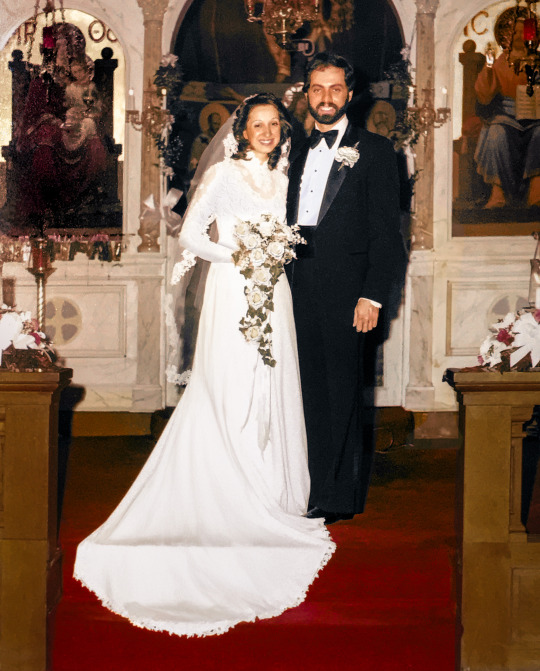
But you can't always save everything and there may be other damage that needs fixing. If something becomes pure white, there is no way to restore that detail. Thankfully I was able to use the new generative fill feature to bring back detail in the dress, the flowers, and the tuxedo shirt.
And because I hate front facing flash and how it makes colors look ugly and sterile, I may have also added a marble floor and pillars.

Next up was a photo of Anastasia, Katrina's mom, protesting Henry Kissinger on behalf of her home country of Greece. This suffered from the same color fading issues.

What made this one a little more tricky was an uneven fading. The left side had to be adjusted independently and the top was even more faded. I had to isolate the trees to bring back their color. And the protest signs were difficult to read, so I enhanced those as well.

Next we have this lovely photo of Anastasia tending to some house plants.

This photo was actually in decent shape. It lost a little contrast, had a little bit of fading, and her top retained almost no detail I could recover. Recovering accurate skin tones is probably one of the most important skills I learned when restoring these photos. I wanted to keep that filmic look of the era while avoiding making people look jaundiced or pale. Lightroom's new masking feature that let's you isolate every aspect of the people it detects in a photo. This made fixing skin tones much easier. I could isolate just her face or her lips or her hair or her eyes and make precise individual adjustments. This process could have taken a great deal longer without this feature. But, I brought back proper contrast and color, added a little bit of detail to her top with gen fill, and hopefully got fairly accurate skin tones as well.

Next up, forward facing flash strikes again in a photo of Mike and Anastasia during Christmas.

Film did not do well in low light. If it was indoors and nighttime, you pretty much had no choice but to use flash. But a flash is a very small, bright light source and this causes a very unflattering result on humans. Today we have much more powerful flashes with rotating heads. We can bounce the light into the ceiling or off a wall and increase the size of the light source to get a more flattering result.
In this photo I wasn't able to do much, so I just balanced the skin tones and brought out some hidden detail and called it a day. It's still a lovely memory and thankfully film has such character that it negates a lot of the unflattering aspects of direct flash.

Next up is some cuteness...

A big priority when editing photos is to make sure the subjects are the star of the photo. And in this one their faces were a bit obscured in shadow. There was also a lot of haze in the background hiding the beautiful vista. Not to mention when I cleared that haze, there was this super faint hint of something in the sky. I can't tell if it was a rainbow, but I decided to believe it was a rainbow. The only thing that I am still struggling with, and this seems to be common with a lot of old photos, is green. Getting a good, saturated, natural green to look right has been very difficult. Everything I try ends up looking toxic or fake. The only thing that ends up looking right with the rest of the photo is more of a yellow-y brown. It's something I'll have to work on as I learn, but as long as the overall photo looks balanced and natural, I'm okay with not perfectly nailing the greens.

Up next we have a lovely scene on a Greek dock...

As far as editing goes, this was pretty basic. I just undid the fading, adjusted the skin tones, replaced the blown-out sky, and made the colors pop. But I think this is actually one of my favorite before and after shots. I just love how such a simple fix brought this scene to life.

A new car is a big deal and Anastasia looks so proud here...

This image has another common issue in addition to the typical fading of colors. It has a yellowish orange color cast. This could have been an issue with the film used or the development process or a chemical reaction on the print. A color cast is a lot like looking through colored glasses. It's like a translucent color material was put on top of the image. This can be a little trickier to deal with, but if you know your color theory, you might already know the solution. Blue is the opposite of yellow/orange on the color wheel, so if you introduce blue to the image it should balance out. Also, add a sky if it was missing.

Next up we have a landscaping project...

This one wasn't too tricky, but there was one interesting issue I had to address. All light has a color temperature. Daylight has a temperature of around 5500K. But the inside of the garage was being lit by reflected light and so that light took on the color temperature of the things it was bouncing off of. So I had to mask out the people and the car and address the color temperature inside the garage to make everything look balanced. Also, the green fought me hard on this one. And with the theme of this picture being plants, I felt I really needed to find a tone that worked. I think I finally got there, but I spent way too much time in the color picker doing trial and error of green tones. Also, new sky.

With this next one I actually did a pretty thorough explanation of how I edited it. But this was probably my favorite puzzle to solve from this collection of photos.
I'll do the abridged explanation...

The physical photograph was printed on a paper with a very heavy texture. And when it was scanned, the light from the scanner bounced off that texture and created a pattern of unwanted highlights.

I was worried this was impossible to fix and I almost gave up on this photo. But after one final Google search I discovered something called "Fast Fourier Transform." It's a mathematical formula that can be used to detect patterns. And the image editing software Affinity Photo, just so happens to have a filter called FFT denoise that helps you remove unwanted patterns from scanned photos.
And thanks to that filter, I was able to remove a substantial amount of that pattern...


Then I did my standard clean up techniques...
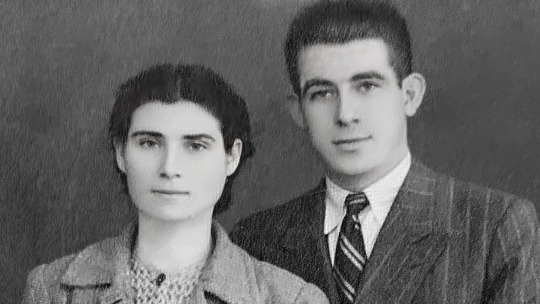
Oh, and I decided to try learning how to colorize.
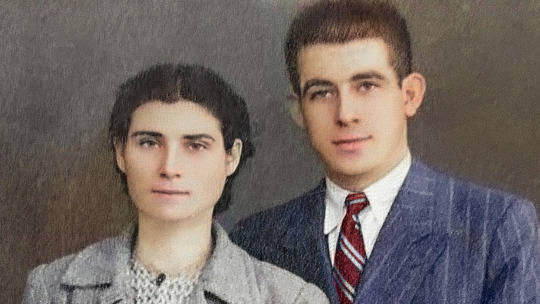
Photoshop has a new set of experimental filters and a colorization tool is one of them. It is not great yet, but it is a great starting place. Instead of having to hand paint every single thing in the photo, Photoshop gave me a base to work with and I could take it from there with traditional techniques.

That's all I have the energy for today, but there are a bunch of cool restorations to talk about. Hopefully you all find this interesting. It was such a great gift to give to Katrina's parents. And spending that time with them and making them happy felt like I was with my own parents again. So we all got a gift in that wonderful evening.
Part 2 coming as soon as I have the energy!
454 notes
·
View notes
Text
SUMAC & Moor Mother — The Film (Thrill Jockey)

youtube
The Film is a counterintuitive name for a collaborative record from Moor Mother and SUMAC, bands that are as musically immediate and overwhelming as they are sonically complex. Sound is the medium, not the visual register intrinsic to film. But metaphorically speaking, there has always been a “cinematic” quality to the sounds generated by these creators: Moor Mother’s SF hellscapes and Afro-Futurist elsewheres, all of which compel visual imaginings even as they recede over horizons of possibility or empty into nightmare; the experimental colorings that insistently emerge from SUMAC’s improvisatory doom (see “Yellow Dawn” for a recent example) and the suggestions of ritual movement that run across their records’ capacious narratives. A record that invokes the apparatus and structure of film turns out to be suitable conceptual terrain for these formidably talented musicians to meet on.
And The Film asserts its filmic elements. Song titles include “Camera,” “Scene 2: The Run,” “Scene 5: Breathing Fire.” Even “The Truth Is out There” invokes visual narrative through its reference to The X Files (1993-2002), the charmingly harebrained television series that made FBI agents sort of sympathetic (it helps to have Gillian Anderson frequently in the frame). The Film has no such illusions about Executive Branch powers. Early in “Scene 1,” the record’s first track, Camae Ayewa asserts, “I want my breath back.” The clause makes its own allusion, to the last words of Eric Garner, choked out and murdered by the NYC cops. A little later in the song, Ayewa snarls, “You didn’t demand more from a democracy of monsters / They told you to turn down that music or they’ll shoot you,” which sounds like a reference to Jordan Davis, a 17-year-old black kid murdered in a Florida parking lot for playing rap too loud; just before shooting Davis, Michael David Dunn, a 45-year-old white man, told his girlfriend, “I hate that thug music.”
The musicians respond to that miasma of hate by playing very, very loudly. “Scene 3” concentrates SUMAC’s capacity to coordinate doomy textures into a slow crawl. The band incrementally increases the atmosphere of dread as Ayewa moves her lyrics into images wrought with the force of her own rage and disgust (“America pissed and shit itself, no diaper / Obituaries and death don’t need no writer”). The accumulated intensity is visceral; you know a break is coming, and you want it even if you sort of fear its shattering, deafening blast.
Moor Mother and SUMAC are all adept improvisers, uncannily able to gather impulses and sounds that verge on chaos into aesthetic forms that feel saturated with meaning and intent. That’s an intrinsically human ability. The Film summons, with nearly apocalyptic dread, the contrasting sound of the machine on one of its most forceful tracks, “Camera”; a mechanical voice intones, “I am a smart fellow, as I have a very fine brain of 48 electrical relays.” Is that you, ChatGPT? Actually, it’s Elektro, the robot Westinghouse engineered for the New York World’s Fair in 1939. A year to conjure with: Europe and China in flames, fascism ascendant, the machines advancing amid relentless slaughter. The song descends into some of the most intense dissonance that Aaron Turner, Brian Cook and Nick Yacyshyn generate anywhere on the record.
Something like order comes back into focus ten minutes later, in “Scene 5: Breathing Fire,” as Ayewa asserts, “We had meaning / We had meaning.” The emphasis on that last word is as consoling as the past tense Ayewa uses is chilling. Through the first four minutes of the lengthy composition (“Scene 5: Breathing Fire” is the longest track on the record, at over 16 minutes), Ayewa unleashes breathless strings of lyric complexity as the band plays with powerful stop-start, doomily disjunct precision. Just after the four-minute mark, the song breaks through — the film is penetrated. The music is all onrushing thrill, Ayewa’s voice surges and snarls, “Take off running / Take off running.” She urges and inveighs. She breathes poetical fire, in answer to Garner’s cry of mortal agony. The song suggests that we all need to break through the film; just sitting back and watching is inadequate to our moment. And if we do? Take off running. The machines, the fascists and their various minions are already here.
Jonathan Shaw
#sumac#moor mother#the film#thrill jockey#jonathan shaw#albumreview#dusted magazine#jazz#doom metal#improvisation
17 notes
·
View notes
Note
Hi, I hope you're well! I don't know if you've had this question before and if you've already answered, I just wanted to find out what reshade/gshade preset you currently use and how you get your pictures to have a dreamy but somewhat realistic undertone to it? thank you 🫶🏽
Hi stranger - I am well thank you, I hope you are too.
I use Reshade, it’s a custom preset that I don’t plan on sharing. That being said - I use very little shaders in reality - primarily Filmic Pass, Levels, Curves, and Technicolor! I mostly like to enhance saturation, as I quite like vibrancy especially where greenery is concerned. I also use lighting mods which have some impact.
However, I will say that I think the “dreamy” factor you speak to is mostly achieved with a combination of ADOF and Ray-Tracing AKA Marty’s Immerse RGTI shaders. See ⬇️



I constantly change the settings for these shaders depending on the image I’m trying to achieve + other factors such as lighting.
If you don’t know much about ADOF or RGTI I would definitely refer you to @pixelplayground and her introductory guide on screenshots/RGTI + ADOF. It was very helpful to me when I was getting more interested in customising my Reshade. RGTI did give me some trouble when I first started using it - feel free to message me abt it and I can try and help or perhaps create a tutorial.
For realism, I’m not quite sure what you mean precisely; I would assume resolution? If that is the case then I would attribute that to my monitor which has native 4K resolution + I play my game on ultra settings. Feel free to send a follow-up message about that if I misunderstood!
14 notes
·
View notes
Text
Bucky F*cking Dent
The Wee Review
Baseball might not be a draw here, but most people will know someone who lives for a football team, and Duchovny, adapting his own book, taps into that obsessive passion with precision. The setup is a bit contrived, reminiscent of the German comedy Good Bye Lenin!, but the depiction of a late-life reconciliation between father and son is anything delight. Duchovny is delightfully crass as the vulgar but deceptively romantic Marty, who seems to have made peace with dying, but will be genuinely devastated by his team losing. Marshall-Green is fine at Ted, but is outshone by Duchovny and a sparky, sensitive turn from Beatriz as a confidant and figure of comfort for both men. The story is nothing that hasn’t been done before – and Duchovny knowingly overstates the importance of baseball, which has a storied filmic and literary history as a metaphor for just about everything – but with a script polished to a crisp sheen, a splendid lead performance, and a willingness to lean just enough into sentiment. Just like its namesake was in 1978, Bucky F*cking Dent is a winner. 4/5
11 notes
·
View notes
Text
On Lynchian Perversity
Eraserhead is a perfect exposition of Lynchian pornography. What "mystery" is there other than where, in the proletarian nightmare of the film, is the bourgeoisie hidden and how? The answer being precisely that the bourgeoisie has secured its throne on—and from—the other side of the screen. The sublime irony that Marxists are barred even from dignified analysis, never mind from actuality, by their rejection of Idealism serves as a perfect blueprint here. Those who mock Plato's claim that light is emitted from the eyes would be perfectly justified were it not for a single omitted detail: unlike Lynch cultists, Plato is not an imbecile. Just as the body of "labor" is proactively traversed from the top-down by the bourgeoisie as it unilaterally labors the proletariat into being, the filmic proletariat in Eraserhead is cut open by Lynch's directorial—paternal—authority. Both cases do away with whatever metaphors one might make between them; perhaps the relation between form (Platonic or otherwise) and content is nothing but narcissism. It is Idealism which has rejected, or dejected, Marxists into a being whose actuality is identical with the filmic garbage dump that is Eraserhead. The monstrous baby is the fundamental Lynchian anti-metaphor: creation as excretion. The monstrosity of the baby, film, and proletariat allows the cast, director, and bourgeoisie to appear as dignified—or, more properly speaking, to disappear as the supreme authority into a Royal distance. Lynch is the pornographer of the bourgeoisie itself, of the very ambiguity of the "of": the veritably subhuman spectacle of Eraserhead is its unnerving display of "form penetrating content", the total passivity of the father is exactly the total "passivity", the total security in and of immutable authority, of the director, just as it is that of the bourgeoisie. Can the filmic rabble prying at Henry's virginal Royalty, his puffy cheeks, his wet eyes, his eccentric hair, be distinguished from the actual rabble prying at Lynch's directorial authority, emanating from behind almost identical features—ironically, getting further and further away from what is under their noses? Formally, Eraserhead and the rest of his filmography are nothing but an obscene disclosure that this is exactly how the bourgeois Subject exiles the proletarian Object. Suffice to say that, other than Mulholland Drive, any one of his films lends itself to much more analysis than all of them combined deserve. I will only provide the bare minimum, and derisively at that. Eraserhead is also a perfect exposition of the primal—and only—fear of the Father/director/bourgeois, henceforth referred to as "the bourgeois Subject": FEAR OF LOSING PRIVILEGE. Lynch's whole body of work is haunted by the dysgenic vista, by the constant infiltration of and/or collapse into undesirability—including, and especially, of a formal collapse into legibility, of losing his status of genius; the genius of status itself. Apropos of the insufferably pompous psycho-drama accompanying this film, indeed, the director's distress is very much integral to the film: binding and murdering the monstrous baby is a ritual against dysgenic abjection, against the collapse into baby/film/proletariat, it is the expulsion of "the proletarian Object". Does the opening shot itself not subsume the Lynchian filmography and pornography? Americans who worship Lynch and claim that his films are distilled "Americana" are wrongly correct, so to speak. Contrary to all appearances, this very shot is the genesis of America itself: the hero of the bourgeois Subject and the villain of the proletarian Object floating in a void. America, in the grossly Phenomenal sense, is nothing but the subsequent unfolding of Eraserhead, nothing but the separation of hero from villain by an erection of a "spatiotemporal" body between them. That actual American globalism can be best described as directorial, and the world in turn described as a studio, is as unsurprising as the fact that Lynch has an explicitly paternal relation to his cultists. That the barely concealed pornography he leaves for them to find is a mirror, conversely, is as surprising as the fact that it is the Royals, not the rebels, that have constituted America. The film's peculiar architecture is precisely the frontier of the industry or the industry of the frontier. Whereto the industry? To the frontier, of course. Whereto the frontier? To the industry, of course. Hollywood is in California for good reason: the occult event of traversing the frontier by industrial means grants Americans the power to industrially project the frontier back at the whole world—England's throne is no match for the director's chair. The filmic operation is a Royally industrial maneuver enforcing a frontier, the camera lens, in front of which abject beings are directed—illuminated by an eye. Even the title is nothing but mockery: the deliberate mixture of social realism with Lynchian parlor tricks is a "hermeneutic" confession that all the functions supposedly liberated by America, in this case production and sex, have been liberated—from—America, dumped back into the Old World. Are the disgusting golems of Eraserhead trapped in the veritably European claustration of nothing but production and sex—which are scandalously purported as primeval, both in the film and in general—not as one "anamorphic" end which grants an other end precisely "anti-anamorphic" powers, the power to disappear...and to designate? That the title resonates with a filmic instance of the most banal labor which nevertheless appears, narratively (formally), as a parlor trick indicates that the whole "division of labor" is an occult Royal ritual of the division—from—labor: the golems are doubly labored and doubly sexed by Lynch, who thereby grants himself unlabored and unsexed occult paternal power whereby he can designate this very filmic operation. Apropos of paternal, is The Elephant Man not the spiritual successor of Eraserhead? Making abstraction of the biographical aspect, what does the film itself show? It is masterfully obscene, or obscenely masterful, to explicitly place the film in Europe but totally conceal the fact that it is a film about Europe. Who or what is John if not the monstrous baby that was supposed to die? The relation between the baby, Henry, and the rest of the cast is all but identical with that between John, Frederick, and the rest of the cast. Biography is as much of a red herring here as "surrealism" is in the previous film. The Elephant Man is as the attempted exorcism of the failed murder of the monstrous baby: Eraserhead collapses into "surrealism"—or spectacle—proper right after the failed murder, is The Elephant Man not a sanitized retelling of this second part of the film? The film deploys a Dialectical freak show of observer-observed, however, it is the Dialectic itself which constitutes the prominent Lynchian parlor trick. The claim that the applause of the theatrical climax "symbolizes" the Old World applauding the monstrous American that is John is not exactly wrong (at least not when considering the many other previous allusions to this), or is wrongly wrong, so to speak. It is only wrong insofar as it still invokes a pre-American, pre-Lynchian, topology. Rather, the impossibility of expelling the proletarian Object forces the bourgeois Subject to stretch itself into a Klein bottle whereby IT, rather than the Object, disappears. Do the excrescent mass of the baby and the excrescent mass of John not constitute "one surface", exactly in the Kleinean sense? That is to say, this topological "suture", of making two surfaces into one surface, not unlike America "revealing the world to itself", is actually the ultimate topological "lesion": the directorial intent of the bourgeois Subject is thereby freed to ever-circulate in and of the one surface, culminating in it thus being able to "truthfully" deny its presence therein. Apropos of Lynch's constant reference to magic, filmic or otherwise, is the vessel not the alchemical object par excellence? The Kleinean binding and loosing surpasses whatever substantial operations would have occurred therein, not unlike the Lynchian "style" occulting the filmic substance. Of course, Lynch—most likely—did not "mean" any of this. Do pornographic actors "mean" their genitals? Do the fathers of the monstrous baby and of John "mean" their corporeality? What exactly is the substance of status, and its genius, if not this very Kleinean body? It is not so much that the Subject was on one surface and the Object on the other (perhaps the Subject has secluded itself in one imaginary end of Kleinean circulation while dumping the Object in "the other"...the only "symbolic" act?) but that the Subjective seclusion is orthogonal: the Eraserhead-The Elephant Man filmic body itself constitutes the dysgenic vista, one that is no longer between Subject and Object, but between Object and the abjection of its indefinite sickness or unreality—the Subject being precisely "behind" this plane, behind, or beyond, the screen. Eraserhead shows the failure of the pre-American, pre-Lynchian, Subjectivity of a European eugenic-dysgenic bodily operation, of the distinction of surfaces. The Elephant Man shows the "trans-genic" filmic operation of the bourgeois Subject going beyond the proletarian Object, leaving it reeling in a literally "dys-genic" state, a Kleinean impasse "between" the "bad" itself and the "offspring" itself, between sickness and unreality. Moreover, the Subjective directorial maneuver returns with a proactive vengeance to the Object, the "trans-genic" abjection is ran through by a "trans-Kleinean"...projection. Even in the Historical sense, "class consciousness" only appeared in the—demonically ironic—Material sense, once it became possible for a single American to watch the spectacle from across the Atlantic screen. Strictly speaking, there has never been such a thing as an American bourgeoisie, an American proletariat, an American Capitalism, an American Marxism—there has never even been an American Economy! Rather, there has only ever been an American cinema, one that runs the whole world through and forces it "back" onto the American projection screen, and one that was always already inscribed into any and all Political and Technological endeavors—subtract their common denominator of visual venality and nothing remains. There is little to no Philosophy here. Can the projection screen be said to have a second surface? Who is "behind" the American film reel through which the whole world sees itself forever collapsing into the same perverse bilaterality? Lynch is the only director whose work is "about" nothing else than his unimpeachable authority to make his work as such—the only American director. At the slightest criticism, does Lynch not invoke the primordial accusation made against the indigenous and the slaves: "you don't get it"? Indeed, could the American production have appeared as anything but a Lynchian cacophony to any of them, one through which the bourgeois Subject alludes to its disappearance? No more than industry could have fathomed that Hollywood is its final destination. Or, indeed, no more than anyone could have fathomed that the final theater performance in The Elephant Man is a perfect microcosm of Lynchain visual antics, or that the final freak show likewise prefigures the "black lodge". Apropos of impossible foreboding, is Dune not the first Twin Peaks episode? Despite the film's volume erupting in bloated self-satisfaction, there is very little to say about it. A pastiche of Old World architecture, as if the whole world was visible from the Californian coast, foreshortened such that all empty spaces in all architectural forms were filled by other forms; as if contempt was a building material. A formal density that is only matched by the equally formal (Kleinean) inanity of space: the "Newtonian" class relations which animate the film are so alien to America that they might as well be in literal—and fictional—space. Perhaps this is why the novel, written by an American, is considered as arcane as it is "unfilmable" by other Americans? Suffice to say that "Paul is Lynch" is too primitive a claim even for this film. Rather, what is remarkable is who and what is not Lynch—and how. Although the film is already haunted by the, now archetypically Lynchian, dysgenic villains and strangers, this is only a red herring. It is not so much that there is a dysgenic exception threatening Paul's Royal journey, but that Paul's journey constitutes the only exception to a dysgenic totality. Recall that every character but Paul is explicitly Other, either by being undignified or suffering an indignity: his father loses a tooth, his mother is pregnant, his sister is preternatural, a balding man, a tattooed man, an old man, etc. Paul's indignities, however, are explicitly not real. That, indeed, the box is the film itself—excruciating unreality—is always already accounted for by the water of life being the screen itself—the bar past which only Paul can see and, moreover, from beyond which he now Royally directs Arrakis...and the film itself. That Lynch disowned THIS film is not even ironic, rather, it turns the actual world, the Old World, into the (proletarian) Object of irony. There is no metaphor here. Film supersedes reality exactly as meritocracy does: whoever has directed the Objectivity of labor has simultaneously directed the "labor of the Objective", has relegated labor to, and as, the vacuous and cretinous form of the Object, and has rightfully (rightfully! there is no irony HERE) secured the Royal throne from beyond which he can relish the treasure of remarking this demonic irony. Paul's dreams are a much better triangulation of Lynch's position. Indeed, the treasury of bourgeois Subjectivity is precisely the oneiric—the terminus of the Lynchian filmography, in and of Twin Peaks. Would all eyes turn to California should filmic production cease? Quite the contrary...DON'T YOU LOOK AT ME! That the closing shot of Blue Velvet likens Dorothy's robe to the sky, the nightmare of the barring tapestry to the waking liberation, is most troublesome. The Kleinean body of dreaming lets the nightmare itself wake up, it is the sky that becomes the robe—in dreams you're mine all the time! Incidentally, apropos of absent fathers, there is a vulgar footnote regarding Jeffrey's identity: the many similarities (even diegetic ones) between him and Frank come to a head in the final murder—does the camera going into Donald's ear and out of Jeffrey's not allude to Jeffrey being grafted onto the object of paternal filmic impetus, that the film happens in his head, so to speak, that he is now the closet wherein Frank lurks, inverting, or Kleining, Subject-Object, phallus-yoni, reality-film, etc.? It is no coincidence that this sounds extremely pagan (amputation-reintegration, etc.), Christianity proper (Christocentric Gnosticism) alone resists filmic delirium, so much so that "all the kingdoms of the world, and the glory of them" would have to be fabricated had they not been real—moreover, perhaps it is the fabrication itself that constitutes the supreme temptation? The deafening silence of the absence of Christianity in general in Lynch's filmography cannot be overstated. Of course, it might be case that its absence lends itself to the loftiest "structural analysis" but suffice to say that there is a veritably Lynchian counter-Reformation whereby the celluloid itself is projected as sacramental—terminal occultism. Many Protestant Americans rightly despair and remark that "America is a Christian Nation" only insofar as it is always attempting a Lynchian exorcism of Jesus Christ himself. Regardless, the extremely vulgar analysis about the film's supposed "surface" and "depth" can nevertheless be of some use. Instead of asking what the "depth" reveals about the "surface", one should ask what the "surface" reveals about the "depth". Is the film's title not a strange euphemism? Apropos of dreams sanitizing reality, is the "depth" not sanitized by the "surface"? Who or what are Frank and the gang? Hypersexuality at the cost of unpardonable deviance, hysteria, toxicomania, street smarts, tireless bodily animation, most of all a penchant for "antics", for being "uppity"—the answer is as obvious as the genre of music accompanying their arrival at Ben's apartment. The film's "deep" title is Black Skin. Does the pretense of "pre-Oedipal" Freudian nonsense about "absent fathers" not therefore collapse into bitter actuality? A masterstroke of bigotry! So distasteful that it is almost imperceptible, a "pornogony" which turns the viewer into the (proletarian) Object of pornography. As perverse as Frank's tears. Apropos of bitter actuality, many Lynch cultists are confused about the final triumphant return of the idyllic suburbia. What was the pornographic display of the "depth" for? Or rather, where is the pornography? What "surface"? What "depth"? Even Lynch deserves better. Having swallowed the "pornography", the final suburbia "returns" as the true depth: the film's end can now be connected to its beginning, however, this is not the tiresome cut-seam, rather, the surface of the initial suburbia is no more. Indeed, looking awry at the bar itself, the "inter-Continental" fetish object between end and beginning, makes something very curious show through: nothing at all. That is to say, the bar is the "spatiotemporal" body of the film itself, orthogonally, one end of the bar being the end of the film and the other its beginning. It is tremendously ironic that the Continental bar was proudly stripped of all topological dignity—not unlike Dorothy—only to reveal itself as Hollywood property. Moreover, property itself is the ultimate, and ultimately pornographic, thesis of the film: the whole world wrapped in the blue robe of a "maternal" property which "precedes what it owns", this being disclosed from a privacy the likes of which rightly makes Marx a Lynchian village idiot. Is the shot of Jeffrey and Sandy kissing in a crime scene while surrounded by police not the true depth and destination of the joy ride? Power and desire unduly touch each other just as the end and the beginning of the film do—the only contradiction worthy of being called Material and one that "paradoxically" goes nowhere. Value is not extracted and withheld from anyone (this is absurd), rather, everyone is proactively withheld AS value, indefinitely withheld as nothing but themselves. Perhaps this is why all Continentals are so hysterical about America? Even Historically speaking, nowhere else is the occult formula of LIFE = VALUE (which upends the whole Continental edifice) as pornographically disclosed. Moreover, does Lynch not present insufferably particular interiors of private residences, insufferably self-satisfied Subjects and their insufferably venal conspiracies, insufferably eccentric filmic form—DESIRE—as the very throne of his own filmic genius—of POWER? Blue Velvet is also the primal scene and completion of Lynchian vulgarity, the dysgenic parade finds its "triadic" counterparts of misogyny and class horror. However, this is not as bad as it seems. It is worse. Of course, there is an obvious "Material" reading of his filmography as Marxist class horror, which culminates in Bob being nothing but "bare proletariat" invading a bourgeois space, but things are not so simple. Apropos of Power and desire, perhaps Wild at Heart, an ostensibly pedestrian, "regressive", film, discloses the mechanisms of class horror and misogyny in a most unexpected—strangely Lynchian—way. The motif of identity and its ambiguity, as obsessive as it is boring (and as literally narcissistic in film as it is in reality, film and reality likewise looking at "each other" like Narcissus), which defines his subsequent films is, most surprisingly, already present here. Sailor and Bobby...are they the one and the same? Perhaps it is impossible to notice that everything between Marietta, Marcellus, Johnnie, Mr. Reindeer, and Bobby is said and done by wistful gazes, half-smiles, swooning, caressing, whispering, etc., as impossible as it is to realize the grave relevance of the witching theme, which rightly makes Freud a Lynchian village idiot. What is Bobby but the final destination of Sailor's criminal journey? Recall that the latter was a driver for the Fortune crime family and the former is one of their hitmen. Does Sailor driving to California not therefore lend the Lynchian highway shot its most perverse surrealism, that of being a literally real? Lynch's critics are, sadly, as hopeless as his cultists—to accuse him of inane surrealism (i.e. the triviality of "it was all a dream") absolutely misses the point, rather, what makes his films abominable is what they unduly introduce to, and as, reality itself; secretly designating Sailor as Bobby, for example. When Bobby assault Lula, the mirror in the room reflects him just as it reflects Sailor later that day. The two also appear together in Marietta's crystal womb, the occult Power leading her back to Lula—what distinguishes the abhorrent magnetism of desire from the abhorrent magnetism of Power? Precisely what distinguishes Sailor from Bobby. Does the film show Sailor "waking up" to his criminality and realizing that he is Bobby? Or, watching it in reverse, does it show Bobby slipping into a "dream" which sanitizes his criminality? Yes. That everything after the final bank robbery could be regarded as Bobby's "death dream" (does the America it shows, categorically different from the previous one, not resemble his teeth?) is as uncanny as the fact that everything prior to Sailor's arrival in Big Tuna could be regarded as his "repressed birth trauma memories". Recall that Lula initiates conversation with Bobby before Sailor does, and tells Sailor that she is pregnant later that night—"pregnant with Bobby". Does this curious and unique instance of initiative, of an otherwise not even infantile but deliberately subhuman character (unsurprisingly, also a woman), not allude to birth? Moreover, does it not allude to the vertiginous—Kleainean—structure of Power-desire, momentarily laid bare in birth? Quite the "primal scene". That Sailor's encounter with the "good witch" and his final realization of love are facilitated by a veritable gang initiation is as unsurprising as the orgy of Johnnie's murder. The film also betrays another Lynchian motif: is his neurotic fear of the police not akin to Marietta's neurotic fear of Sailor? The police is a strange clinamen of Power, a straying from desire, just as Sailor is a strange clinamen of desire, a straying from Power. It is no coincidence that a policeman's yielding to desire is what ultimately brings Sailor back into the fold—or the "unfold": the final musical performance completing his journey to the Californian screen, the fourth wall breaking the viewers. In this sense, Lula can even be said to be Marietta's top agent. It is very difficult to identity what exactly distinguishes Lynch's misogyny from normal misogyny. Even in the most vulgar films (Horror or Lars von Trier's), the misogyny, no matter how exuberant, always allows for a minuscule condemnation of the misogynists through a similarly minuscule remainder of the women's dignity. Not so with Lynch. His women are furniture, they disappear into the scenery, in fact, can one not finally call the iconic Lynchian color palette what it actually is—feminine? However, this is not a world shimmering with the "Yin" of a dispersed femininity, the romantic "Nature", quite the contrary, "Nature" itself is nothing but an identical—and continuous—filmic designation. Even Historically speaking, "Nature" only became infantile, cretinous, virginal—only became Lula—on the television screen, and for a Lynchian production, no less. Sailor-Bobby traverse Marietta's prosthesis of Lula's body just as humans are said, no doubt derisively, to traverse "human nature" in and of female topology, wherein and whereby Power and desire always find and complete each other. Moreover, Lynch knows exactly how misogynistic his films are. Recall the striking contrast between Sailor telling Lula about one of his instances of casual sex and Lula telling Sailor about her cousin Dell. The former flashback is bright, vital, clean, a Royal portrait of sex, while the latter flashback is dark, moribund, filthy, the sexless Dell threatening the very Lynchian tone of the film. Incidentally, does Lynch imagine Dell's pathology to be the cause of, or punishment for, asexuality? Marietta sends Lula to catch Sailor just as much as she sends Sailor to catch Lula—is Lula's flashback not her only instance of humanity, as if a single memory, a single possibility, a single allusion to asexuality makes the dual relation (there is even a woman accompanying Dell in the flashback itself) rotten, threatening the candy-colored sexed Lula just as much as it threatens the very body of the film—is there even a distinction? Lula is gripped by Marietta precisely for her sexuality, not for her virginity, which "paradoxically" momentarily showed through when she was alone with Sailor. They are both equally necessary for the crime (of) family. Apropos of gripping one's own prosthesis, Lynch turns his empty pockets inside-out in Lost Highway. Even though the film has been rightly deemed inqualifiable, is this enough? A man and a woman (who else?) living in Lynch's house (where else?) receive tapes (what else?) of the house. They watch the tapes of the house in the house. The man, who looks like a bootlegged Lynch, has a dream (what else?) about himself and his wife in the house. A man dressed in black. A woman dressed in black. Man walks into darkness. Woman gazes in the mirror. Man gazes in the mirror. Woman gazes into darkness and calls man. Man walks out of darkness and obscures the camera lens, the darkness then cuts to the darkness of a television screen...onto which the latest tape appears, showing murder (what else?), to complement the previous sex (what else?). Perhaps this is the only thing edified by Marilyn Manson's existence? This straight-to-video garbage must have exasperated Lynch just as much as it exasperates the viewer. Ironically, abstaining from analysis and simply "experiencing" the film, as Lynch cultists mandate, yields abysmal results: the Fred-Pete pivot is purported as a masterstroke of filmic irreverence, however, is it not simultaneously bog-standard "Materialism", Lynch almost explicitly conceding that the Fred act is junk and having to resort to the most primitive maneuver of switching to the Pete act for no reason other than it being non-Fred? Does this excuse the film in any way? Quite the contrary, the "meaning" of the film is precisely the mockery of a much-needed mea culpa (even in 1997): instead of plunging the dignified and dignifying object of legibility into his heart, he plunges a colonoscopic camera into his "lost highway". Apropos of the MTV soundtrack, does Lynch's straining self-reference not resemble something, indeed, characteristically American? The whole film is one punchy Dr. Dre beat away from an Eminem music video. Forced rhymes about toxicosexscapades so surreal that they warp reality and kill the haters—and the women—resemble filmic depictions thereof so much so that it becomes hard to tell whose nasal yapping it is. One cannot, unfortunately, cut critique of this disgrace short (as one should, lest one commits an identically Lynchian crime) without mentioning the painfully transparent identity of the Mystery Man. He is the only one who knows that Fred, the bootlegged Lynch, is hiding as Pete...an embodiment of legibility as mysterious as Dick's name. Apropos of hiding, The Straight Story is just as Lynchian as the aforementioned films. The absence of any Power-desire, any Kleinean antics, any American bigotry marks not so much the absence of Lynch's authorship and his surrender to biographical rigor, but what is paradoxically his most surreal film—a display of an America without Lynch. The lack of a sexual couple, naturally, dooms the filmic world to senescence, mental disability, poverty, etc., as if everything was imbibed with Lynchian contempt and reproach of the highest order. Just as the world cannot exist without America, America cannot exist without Lynch. This hypothetical existence without his consent condemns it to the worst depths of the Lynchian repertoire: a torpor worse than anything in the "black lodge", a high noon worse than any overexposure, an alogia worse than any of his extremely primitive dialogue; a body as compromised as the one in the other "biographical" film. Of course, this is where one must avoid the trap of conceding that Lynch is therefore the sublime doctor of the American soul—quite the contrary: America is itself always already Lynchian in the almost literal sense, there is absolutely nothing for Lynch to reveal or critique, just as there is nothing about Lynch that America can rebuke, his filmography is only a narcissistic vista whereby both parties can pretend to be someone else. Apropos of the double and all of its occult implications, after the miracle of Mulholland Drive, a film as gallant as the others are abominable—one that definitely owes its existence to a series of events nothing short of Lynchian—does Inland Empire consist of anything but Lynchian antics coming back with a vengeance? Acting out for two, so to speak. Shaking the camera like a rattle (perhaps the tambourine song was not so random?), animal costumes, screeching strings, jump scares, special effects as subtle and as necessary as excrement smeared on the screen from the other side; this is a pre-verbal temper tantrum. Perhaps defense of this film is in short supply since the utmost secret thesis woven into this labyrinthine fugue is "I am a bad director"? Although it does lend itself to some legibility, the janitorial endeavor of "connecting the dots" is precisely what one must never do. Rather, one should take the film at face value and plumb what is above the surface, traversing the same distance that one would have traversed down the latrines and landfills of "depth", for an insight not dissimilar to their usual contents, and instead strike at what is hidden in plain sight. The woman crying in front of the television screen, the Lynchian ideal, filmic or otherwise, later says something so simple that it is almost impossible to notice: "SINFUL DREAM"! Obviously, dreams are the Lynchian-American Holy of Holies and, almost as obviously, an Eastern European, the frontier of the Lynchian dysgenic vista, is Ontologically condemning the great dream. Again, whether any of this is "intentional" or not is irrelevant. Just as there is a Laura Dern beyond the question of whether it is Nikki or Sue in this shot or that shot, there is a film beyond, or above, the question of whether any of it is "conscious" or "unconscious". For example, one could say that finally depicting Europe itself as the final object of horror and hatred makes this the necessary end of Lynchian filmography, or that, indeed, even the Polish side being absolutely devoid of Christanity guarantees—far more than any explicit statements—that Lynch has a psychotic fear thereof. Who intrudes on the set during Nikki and Devon's initial rehearsal? Of course, it is later shown to be one of Laura Dern's characters. The "deep" question would be which one it is, while the lofty question is of a different order. Making abstraction of Mulholland Drive, all of Lynch's women could be said to be finally rebuking him through Dern during the "confession" scene (the deliberate ambiguity of her character therein suggests as much), however, recall that Lynch himself has shot most of Inland Empire with his own hand, so she is "in reality" saying it all to Lynch, who is probably across the table: a nauseating form-content confusion whereby the very looking away from the screen constitutes the foundation of that which one looks away from. The rehearsal scene contains a shot from the vantage point of the intruder, without revealing his identity, only for the scene to later repeat, this time beginning with an intruding vantage point, only for the intruder to be shown as a Dern character—it is not so much that "the Phantom is Lynch" but that Dern herself is a hypnotic device, so to speak, the Nikki-Sue revolving door by which Lynch exits the film. An observer-observed freak show reflecting The Elephant Man and, indeed, a final monstrosity looping back to Eraserhead. This would qualify as a brilliant directorial maneuver of formal return were it not for the simple fact that, just as there is no movement from Eraserhead to The Elephant Man, Lynch's subsequent filmography is frozen inside the very Kleinean body circumscribed by the two films; there is nowhere to return from. Apropos of infertility, filmic or otherwise, Lynchian misogyny is, conversely, brilliant for the same reason: Inland Empire can be described as being "about" nothing else than Lynch's abuse of Laura Dern's appearance, a seamless continuation of womanhood itself being "about" nothing but being designated—abused—a woman by the very "reality" which thereby disappears into serial (reproductive) "objectivity". Of course, the psycho-drama can be said to vacuously circulate between Nikki and Sue, just as "real" reproduction can be said to circulate between man and woman, however, the many formal—filmic—interstices, which belong to Lynch alone, are themselves what circumscribe the desecration of Dern's image, said interstices, much like the fracture lines which mark the feminine body, constituting the film itself, exactly as said fracture lines constitute womanhood. Is the Historical practice of passing women from their fathers to their husbands anything but the two males using the woman's body as a prosthesis to have "Metaphysical" homosexual intercourse and, moreover, the woman's appearance as an uncannily filmic object to disappear the intercourse? For example, it is all but impossible to notice that the Dern character in the "confession" scene speaks of a removed eye and a castration, terminal paganism, as impossible as it is to notice that the scene is a "confession" in the first place; the viewer is instead relegated to the fool's errand of identity (is it Nikki or Sue?), just as he is otherwise relegated to the question of "his own" identity in "reality". This is all laid bare in the most vulgar way by Lynch himself: in the scene wherein a Dern character kisses the crying woman before vanishing, the latter is then shown from the former's vantage point—recall that it is most likely Lynch himself who is standing there in Dern's place to film the shot. A form-content incest as abysmal as the fourth wall being ostensibly broken by a Dern character's "soul" floating above her body and seeing the hitherto invisible camera from behind, only for it to be revealed that it is the camera of Kingsley Stewart, the diegetic director of the diegetic film. That the crying woman finally escapes from her television cell into a house previously shown as part of a diegetic set should not beguile one into believing any Continental nonsense about the strife of actuality, changing the past, the big screen defeating the small screen, etc. It is simply that salvation is depicted as a Lynch film...inside a Lynch film. Of course, this coincidence of dreaming and salvific—bourgeois—Subjectivity is far more explicitly made in Twin Peaks, Lynchian ground zero. Let us briefly recall the Lynchian triad of dysgenic parade-misogyny-class horror. As many have noted, it is very difficult to have anything to say about Twin Peaks, however, this is neither due to its volume nor to its eccentricity (both of which are overrated, and coincide in a kind of implosive narcissistic repetition, regardless). Rather, said triad is simply stripped of all ostensibly redeeming elements, approaching a "bare bigotry" which is, unsurprisingly, indistinguishable from a "bare America". Class horror, for example, is depicted at least "poetically" in all the other films. The Lynchian motif of depicting poor spaces as "aboriginal" nightmares of total confusion and rich spaces as trumpets of final revelation reaches its abhorrent climax in Twin Peaks. In Eraserhead, his first film, rightly deemed his most surreal (at least in the classic sense), the poor space is the whole film, naturally. In The Elephant Man, there is an analogous formal trick, the rich space is simply a literal rich space in the classic, pre-American, sense, which strangely enough seems to erase the initial dungeons and cages from long-term memory, to say nothing of the final theater—indeed, the Kleinean body has little to do with analysis and is nothing but filmic. In Dune, the poor space belongs to the Fremen troglodytes, the rich space being more or less the rest of the film floating above them; poverty is deemed secondary, pathological, bug-like. In Blue Velvet, the poor space is Ben's apartment, a cauldron of too many transgressions to list, down to gender-bending (Ben is more than a little feminine), while the rich space is the final rejuvenation of 1950s suburbia. In Wild at Heart, Marietta and Mr. Reindeer constantly provide grounding from their temples to prevent the film itself from settling in Big Tuna, which is as Ontologically offensive as it is poor. In Lost Highway, the rich space of Dick fills up any narrative holes—poverty itself!—between Fred and Pete. In The Straight Story, there might be an oblique instantiation of the spaces but, nevertheless, does the film not begin with an aerial shot of a combine harvester, a formal wealth consisting of the (now veritably prehistoric) Old World industrialism being transfigured into "imaginary"—American—wealth? Theoretically, money is made every time this shot is played, moreover, piracy does not end the profit, quite the contrary: undue images—not unlike dreams—must have been the very primeval "Material conditions necessary" for the "discovery of America". In fact, the "real" people who sow and reap the very filmic field are most likely doing it on account of an image not dissimilar from The Straight Story itself, just as their "real" ancestors most likely came to America on account of an occult image not dissimilar from this very shot. The film even closes with a shot of a literal poor space—perhaps a warning that the (forced) referents of occult images are, likewise, hidden in plain sight. Even Mulholland Drive, which deserves no criticism proper, confirms the rule. The final party dispels what is canonically considered the dream act, which, although not poor, is emanated by or attempts to redeem the events arranged in the poor diner by two poor people. In Twin Peaks, however, this kind of analysis falls flat. It is simply that the rich space is Cooper himself, the bourgeois Subject, and the poor space is everything not Cooper, the cretinous "thermodynamics" of the proletarian Object(s). Suffice to say that even attempting to analyze the countless threads of Twin Peaks is the very labor that would guarantee one's residence therein, and one's abject reliance on Lynch's Divine Epistemological mandate, exactly as the filmic population relies on Cooper's identical mandate. In the most formal sense, what, where, or when exactly is Twin Peaks? A hideous auto-Orientalism wherein the sitcom itself is depicted as not only always already indigenous, but imbued with all the exoticism of the pre-American "Metaphysical" wilderness—and a hypothetical pre-American "reality" proper—a veritably Edenic space, Paleolithic preterritorialization, Disney cartoons made flesh, the best advertisement to date of America as such, moreover, the closest thing to proof of the hypothesis that, indeed, the category of Truth itself cannot be separated from an American originalism. Whether Bob is Leland or vice versa makes little to no difference, the Adamic bourgeoisie of Cooper binds and/or looses him just the same. Recall that Mike and Bob initially "explain themselves" in Cooper's dream (it would be Bob's first appearance were it not for the previous shot of him in the Palmer household in the same episode), already upending the end of the second season, and, moreover, Bob is shown in a literal industrial nightmare—a perfect anti-metaphor, a disclosure of the labor-murder coincidence, and, simultaneously, no doubt an illustration of the Lynchian fear of legibility: that the work of understanding promises death mandates the cretinism of Twin Peaks. It could even be said that Bob himself is the main, and possibly the only, citizen saved by Cooper's Subjectivity. It is as if all other Lynchian villains do not know that they are dead, not unlike the Historical European proletariat, hence the characteristic atmosphere of the filmography, dripping with a nameless agitation. Fortunately, America gives the proletariat its first and last job of Object, the show impossibly mirroring this by inverting the usual Lynchian hierarchy of dreams, making Twin Peaks the perennial dream and the nightmare of Bob a mere relegation to (or of) an obsolete reality. Indeed, there is no Philosophizing here: "You may think I've gone insane. But I promise I will kill again.", does this line not perfectly subsume all the actual tragicomical Leftist figures peddling the prophecy of revolution today, from an equally filmic industrial background, no less? Is the sublime maneuver of the show not this very merciful act of letting Bob know that he is a dumb Object (he even disposes of Cooper's only enemy) and putting him to rest, thus letting the "pre-Oedipal" utopia of Twin Peaks bloom? What can Bob be said to leer at if not Twin Peaks exactly as the viewer himself sees it? He appears as a kind of visual laugh track, a ghostly token of grounding from a position as derisive as that of the Object in the most vulgar sense, allowing the show's rosy cheeks and adolescent vigor to indefinitely play so as long as the "necessary Material", or necessarily Material, conditions of expulsion of Objects is met. Of course, watching the show in reverse rather distastefully "confirms" all of this, per the usual form-content incest...but this is not remarkable. Conversely, the Sphinx of Laura does guard something quite surprising. Apropos of the show's vulgar food fixation and, indeed, Lynch's strange fixation with base actions having magical resonances, it is almost impossible to notice that the women of Twin Peaks are the most exceptional women of the Lynchian filmography—they are unsullied by his insane misogyny and are simply allowed to be normal; this is very much integral to the surreal normality of the show. Even Shelly only suffers normal domestic violence, rather than loss of personhood in the usual cauldron of Lynchian filth. Formally speaking, Laura's murder has no "meaning" other than the very base act of a dead woman mostly satisfying the occult Lynchian appetite for feminine misery and allowing the Twin Peaks women a strange respite, as if they are radiating with his own afterglow. That this seems and, indeed, is for all intents and purposes magical makes Lynch more, not less, misogynistic. Just as the ultimate space of bourgeois Subjectivity, the oneiric, being revealed as empty, at the expense of the proletarian Object being excreted as full, does not make the former any less rich or the latter any less poor, quite the contrary—there is an anti-Hegelian inversion of the interdependence itself, such that their modes of appearance to each other cannot be anything but...Lynchian. Reality looks back at itself whenever Twin Peaks is playing just as Cooper's veritably Eucharistic enculturation eventually humanizes the town by dispersing his Subjectivity such that he can only be said to be investigating himself (perhaps the cogency of the actual FBI is cogent even for the FBI in exactly the same manner?). Apropos of Lynchian humor, the irony that Cooper thus possesses the rest of the cast, and that this unearths the "meaning" of the final shot of the second season, is tragically lost on Lynch cultists. As is the admittedly masterful perversity of Twin Peaks: Fire Walk with Me. Of course, there is a dubious analysis that a dead woman is the entry point to the onanistic hero's journey of the "Metaphysical" male that is Cooper, who is so good at nothing but being himself that he even resurrects her in the apotheosis of Subjectivity that is his oneiric treasury—being for two, so to speak, thus making the woman Ontologically obsolete. Needless to say, this falls short of Lynchian abjection. The bourgeois Subject only "finishes" misogyny in Twin Peaks: Fire Walk with Me: the "enigma" of the dead Laura is only matched by the "enigma" of the living Laura in that her filmic resurrection is the punchline to what is perhaps the ultimate Lynchian joke. Formally, the cut from the first act, which already resembles the show "too much", to the second act, which—is—the show, is a supremely narcissistic maneuver. The usual Lynchian "surreal" cut, one between two seemingly unrelated scenes, is now over-Lynchian, the film free falls into malignant self-resemblance. The second act is, formally, a punchline, one coextensive with its purportedly somber content, not unlike Laura's life therein being coextensive with the worst Lynchian misogyny. The show concluding with two Coopers and the film having no Coopers is, no doubt, a bone for the Continentals. I, too, shall perform one charitable act and omit the third season from this critique.
4 notes
·
View notes
Video
vimeo
Cutting Threads - watching the world end - from Anton Hecht on Vimeo.
A work of post cinema, hoping to install. this is a section, have done the full work across 140 phones
This work is a re-filming of Threads, but not in the traditional sense. Rather than re-staging or remaking, it is a modular compositing: an accumulation of screens, each showing Threads as it plays on phones held by viewers scattered across Sheffield. The film returns—not as a singular broadcast, but as a dispersed echo—threaded through the landscape it once imagined destroyed. It is an experiment in repetition with variation, an act of remediation and translation. Each screen becomes a site of both stasis and narrative, of passive watching and active incorporation. As each participant films their own watching, they become presenters of the scene: watchers watching Threads, and in doing so, threading themselves into it. To facilitate this distributed re-filming, the original film was divided into one-minute segments, each accessible via QR code. Viewers encountered these fragments in different spaces and moments, and through their phones, became both audience and co-creator. This structure allowed the film to circulate in a non-linear, asynchronous way—mirroring the fractured temporality of post-cinematic experience. Watching became modular, portable, and context-specific. A participatory adaptation. The result resists the cinematic in any traditional sense. It leans instead into post-cinema: a distributed, composited, and rewilded media experience. Film is no longer indexical in the old way—it is fractured and modular, flickering across surfaces, locations, and moments. Yet precisely through this dispersal, a new index emerges—one rooted in real time, real space, and real hands. The physicality of place reasserts itself. This is a filmic rewilding: not a retreat into virtual sets or synthetic landscapes, but a return to the world as it is, mediated by bodies, devices, and environment. In contrast to the rise of virtual production—where place is simulated, composited, and often abstracted—this work insists on the real and the situated. It translates the apocalypse not into CGI spectacle, but into lived, handheld, partial moments. Threads is adapted not by a singular author but through a collective watching: a polyphonic translation in which each phone, each viewer, adds a variation, a shade, a delay. Here, adaptation becomes layered—less about fidelity and more about drift, echo, re-contextualisation. Theoretical models of adaptation often linger on transformation across forms: novel to film, film to stage. But what about media-to-body, body-to-place, place-to-memory? What happens when the film adapts to its watchers, and they, in turn, adapt to its reappearance? What does it mean to return Threads to the place it depicted? To allow the people of Sheffield—now, here—to absorb and reframe its apocalyptic vision? The work becomes a quiet revolt against the oppression of the simulacrum, against the flattening of place into myth. Instead, it lets the film be re-inhabited. To decay, be retold, and ultimately re-seeded. A watching that is not static, but compositional. Accumulated. Layered. Re-threaded. Ive done the whole film, hoping to install in a space in Sheffield, the final re-setting of the film.
0 notes
Text
WEEK 1-6
Animation Practice Trimester 2
Stopmotion Project
Research and Development
In preparation for this stop-motion animation project, I undertook visual and contextual research to inform both the narrative and artistic direction of the work. The story is set in 19th-century rural Sicily, which required an understanding of both historical lifestyle and visual aesthetics of the time. Research included imagery of Sicilian farmland, traditional working-class clothing, and domestic interior spaces. This contributed to the authenticity of the characters’ environments and supported the emotional tone of the narrative.
Stylistically, the animation draws heavy inspiration from lino cut and woodblock printmaking. This medium was selected for its stark contrast, rough texture, and handmade aesthetic. By mimicking these qualities through paper cutting and thick black outlines, I was able to replicate the expressive edge of traditional printmaking within a stop-motion context. Sketch studies of lino-printed art and visual experimentation with bold silhouettes influenced the final character designs.
Furthermore, I examined visual storytelling techniques found in Italian neorealism cinema, particularly in their use of natural light, silent emotional cues, and subdued color palettes. This informed my use of a faded, filmic color scheme muted ochres, siennas, and off-whites to reflect a sense of nostalgia and emotional restraint.
Materials and Techniques
The animation was created entirely using traditional stop-motion techniques and physical materials. The primary medium was cut paper, with all characters, props, and background elements individually hand-cut using scissors and craft knives. Different types of paper were chosen for their texture and weight to reflect specific visual qualities .
Each frame was captured using a tripod-mounted DSLR camera, with consistent lighting setups to maintain visual continuity and minimize shadows. A flat, diffused lighting system was used to mimic natural sunlight and support the vintage, sun-washed aesthetic.The characters were designed based on a lino cut style, with bold black outlines and minimal internal detailing to create contrast and texture. These outlines were cut separately and layered to mimic the stamped look of lino or woodblock prints.
Animation was completed frame-by-frame, with minor adjustments made manually between shots to simulate natural movement. Post-production involved compiling the images in editing software, adjusting timing and transitions, and adding subtle ambient sound and music to support the emotional tone.The color palette was carefully limited to muted ochres, deep reds/browns, soft neutrals, and blacks to maintain the faded, historical feeling of early film and aged photographs.
Reflection
This project was both a technical and emotional exploration. The process of building The Light Between Us entirely by hand encouraged me to slow down and engage deeply with each frame. Working in stop motion required patience and precision, particularly when animating delicate paper cut-outs with subtle gestures and maintaining continuity between frames.
Conceptually, the project challenged me to convey an emotionally complex narrative through minimal dialogue and visual storytelling. The central themes unspoken love, societal constraint, and memory had to be communicated through posture, glances, lighting, and symbolic elements such as the barley stalk and the final portrait. This reliance on non-verbal expression helped me grow in my understanding of visual language and how to emotionally engage an audience.
Additionally, the story’s quiet sadness pushed me to be more vulnerable in my creative work. Instead of aiming for overt drama, I focused on subtlety and silence using light, movement, and atmosphere to speak where words could not. This shift deepened my appreciation for poetic, slow storytelling and how powerful simplicity can be when paired with intention.
Overall, this project allowed me to combine my interests in analogue techniques, narrative depth, and visual texture and it has set a standard for the kind of emotionally driven, handmade animation I hope to continue creating.
Areas for Improvement
While the project successfully captured the intended mood and aesthetic, there are several areas where the production could be improved, particularly in terms of materials and set construction.
One of the main limitations was the use of flat cardboard for the background environments, which at times lacked the dimensionality and visual layering that could have elevated the overall depth of the scenes. In future projects, I would explore creating multi-layered backgrounds using thicker paper or prepex (Perspex) glass sheets to create more defined foreground, midground, and background planes. This would allow for greater visual height and separation between elements, making the scenes feel more immersive and enhancing the illusion of depth within the frame.
Additionally, experimenting with raised platforms and shadow layering techniques could add more realism and interaction between characters and their environments. For example, having elements at varying heights would create more dynamic lighting opportunities and subtle parallax movement during camera shifts, adding richness to the visual storytelling.Finally, while the handmade aesthetic was a strength, a more structured approach to material selection using heavier stock papers for stability and lighter materials for flexible elements could have improved the ease of movement and animation consistency during production.
These insights will inform my workflow moving forward, as I continue to refine the balance between handmade authenticity and professional polish in traditional animation techniques.
Cultural and Artistic Influences
The visual and thematic elements of Sicilian Man were profoundly shaped by two key sources: the intricate woodblock prints of Japanese artist Fumi Yanagimoto and the rich queer history of Taormina, a town in Sicily known for its association with LGBTQ+ figures in the late 19th and early 20th centuries.
Fumi Yanagimoto’s work, characterized by bold lines, delicate textures, and a harmonious balance between negative space and detailed imagery, served as a significant inspiration for the animation’s aesthetic. Her woodblock prints often depict intimate scenes with a sense of stillness and introspection, qualities that I aimed to emulate through the use of hand-cut paper silhouettes and layered compositions in my animation. The tactile nature of her prints encouraged me to explore the physicality of materials, leading to a more hands-on approach in crafting each frame.
Simultaneously, the historical context of Taormina provided a narrative backdrop that enriched the storytelling aspect of the project. In the late 1800s and early 1900s, Taormina became a haven for queer artists and intellectuals, including figures like Wilhelm von Gloeden and Robert Hawthorn Kitson. Their presence transformed the town into a cultural enclave where expressions of queer identity could flourish, albeit discreetly. This history informed the emotional undercurrents of Sicilian Man, particularly the themes of hidden desire and societal constraints. By setting the story in a similar Sicilian environment, I sought to pay homage to this legacy and highlight the nuanced experiences of LGBTQ+ individuals during that era.
Integrating these influences allowed me to create a piece that is both visually distinctive and emotionally resonant, bridging traditional artistic techniques with historical narratives to convey a story that is deeply personal yet universally relatable.
Conclusion
Sicilian Man was a comprehensive exploration of handmade animation as a medium for storytelling, combining visual experimentation, historical research, and narrative depth. Through the use of traditional stop-motion techniques and paper-based materials, I was able to recreate a tactile, lino-inspired aesthetic that reflected both the era and emotional tone of the story.
The project deepened my understanding of visual symbolism and non-verbal communication, especially in how silence, light, and texture can convey complex emotions. Drawing from historical and cinematic influences, I aimed to create an atmosphere that felt intimate and timeless allowing audiences to connect with the characters through subtle, nuanced gestures and environments.Overall, this project not only strengthened my technical skills but also affirmed the value of analogue processes in contemporary animation practice.
References
https://inf.news/en/arts/51e152b7d4edfde4948e11f706143711.html






1 note
·
View note
Text
Tokina Vista C Lenses Review: Vintage Cinema Look for Modern Cinematographers
youtube
Looking for the perfect balance between vintage character and modern precision? In this video, we dive deep into the brand-new Tokina Vista C Series Cinema Lenses, exploring why they’re making waves in the cinematography world. Let's dive into the video to get a review of Tokina Vista C lenses. 👉 Subscribe to stay tuned: / @roywanguhu
The Tokina Vista C lenses are part of Tokina's premium series designed for cinema and professional filmmakers.
These lenses are part of the Vista Prime collection, specifically crafted for super 35mm and full-frame sensors. They are known for their exceptional optical performance and versatility, delivering sharp images with minimal distortion and chromatic aberration.
In this review, we take a look at the Tokina Vista C Lenses and how they can help modern cinematographers achieve a vintage cinema look in their films. Check out our review of the Tokina Vista C Lenses for a vintage cinema look perfect for modern cinematographers.
These lenses offer high-quality optics and a unique aesthetic that will take your filmmaking to the next level.
Whether you're a cinematographer, DP, or filmmaker looking to elevate your visuals with a classic filmic aesthetic, the Vista C lenses deliver exactly that without the hassle of fragile vintage glass.
The Tokina Vista C Series fills a crucial gap in the lens world: it offers the emotive, analog vibe of classic cinema lenses, paired with the modern durability, sharpness, and workflow compatibility that today's productions demand.
No more dealing with mismatched vintage glass, fragile elements, or inconsistent image rendering. Vista C lenses bring organic warmth to digital cinema.
If you love the organic look of classic lenses but need sharpness, consistent mechanics, and no focus drift, the Vista C lineup might be your perfect match.
If you love learning about the latest in camera gear, lenses, and production tools.
00:00 - Intro
00:22 - What is the Tokina Vista C Series?
00:52 - Key Differences from Original Vista Primes
01:15 - Lens Character: Contrast, Flares, & Focus Falloff
01:44 - Build Quality Overview
02:30 - Mount Options & Sensor Coverage
03:08 - Image Quality & Cinematic Rendering
03:40 - Who Are These Lenses For?
04:45 - Final Thoughts
Thanks for watching! If you enjoyed this review, don’t forget to LIKE, COMMENT, and SUBSCRIBE for more camera reviews, photography tips, and gear breakdowns every week.
#lenstokina vista c lenses review#tokina cinema lenses#vintage cinema look for modern cinematographers#tokina cinema vista prime cinema lenses review#tokina vista c cine lenses hands-on review#tokina vista c lenses#tokina vista c series review#Youtube
0 notes
Text
Tokina Vista C Lenses Review: Vintage Cinema Look for Modern Cinematographers
youtube
Looking for the perfect balance between vintage character and modern precision? In this video, we dive deep into the brand-new Tokina Vista C Series Cinema Lenses, exploring why they’re making waves in the cinematography world. Let's dive into the video to get a review of Tokina Vista C lenses. 👉 Subscribe to stay tuned: / @roywanguhu
The Tokina Vista C lenses are part of Tokina's premium series designed for cinema and professional filmmakers. These lenses are part of the Vista Prime collection, specifically crafted for super 35mm and full-frame sensors.
They are known for their exceptional optical performance and versatility, delivering sharp images with minimal distortion and chromatic aberration.
In this review, we take a look at the Tokina Vista C Lenses and how they can help modern cinematographers achieve a vintage cinema look in their films. Check out our review of the Tokina Vista C Lenses for a vintage cinema look perfect for modern cinematographers.
These lenses offer high-quality optics and a unique aesthetic that will take your filmmaking to the next level. Whether you're a cinematographer, DP, or filmmaker looking to elevate your visuals with a classic filmic aesthetic, the Vista C lenses deliver exactly that without the hassle of fragile vintage glass.
The Tokina Vista C Series fills a crucial gap in the lens world: it offers the emotive, analog vibe of classic cinema lenses, paired with the modern durability, sharpness, and workflow compatibility that today's productions demand.
No more dealing with mismatched vintage glass, fragile elements, or inconsistent image rendering. Vista C lenses bring organic warmth to digital cinema.
If you love the organic look of classic lenses but need sharpness, consistent mechanics, and no focus drift, the Vista C lineup might be your perfect match. If you love learning about the latest in camera gear, lenses, and production tools.
Thanks for watching! If you enjoyed this review, don’t forget to LIKE, COMMENT, and SUBSCRIBE for more camera reviews, photography tips, and gear breakdowns every week.
#tokina vista c lenses review#vintage cinema look for modern cinematographers#tokina cinema vista prime cinema lenses review#tokina vista c cine lenses hands-on review#tokina vista c lenses#vintage look with modern precision#tokina vista c series review#tokina vista c lenses breakdown#tokina vista c review#Youtube
0 notes
Text
Three registers the Real the Imaginary and the Symbolic, the real well what I earlier discussed about the questions of existence or the dilemmas of existence that are connected to the drive register like our sexuality but also like being a parent being alive having a body in Lacan's line of reasoning it's precisely because there is it's just a biological impulse but without an inherent knowledge it is real and why is it real because we don't know how to deal with it it's perplexing in a certain sense that's the real and then the idea is that the human being uses the imaginary and the symbolic to kind of treat the real to try to do something with it and then the imaginary refers to the the register of images meaning like mental representations that we build about reality and often we then when we think about our Consciousness ...Consciousness means that we have like a cinematographic representation in our minds we could for example think about breakfast this morning and immediately see what we had been eating and maybe we see a little movie like thing we like putting the food in our mouth well that is the imaginary like this kind of filmic construction that we have in consciousness so that's one that's the second register and then the register of the symbolic is the register of language use and here we could say that the human being treats the real with words or as Lacan would say with signifiers and these signifiers function in like weblike structures and my idea is that we cover up reality with such a web like structure of signifiers and these signifiers these of course provoke meanings and ideas and that's how there is an interaction between the symbolic and the imaginary so but generally speaking the symbolic and the imaginary are our ways of dealing with the real and that's in Lacan's Theory like the universal idea any human subject is functioning that way and here what is then typical of psychosis then the idea is that there is something of a hole of something that is missing that is not functioning at the level of the symbolic so there is an impossibility to kind of create something of a narrative around certain dilemmas in life that you've been confronted with and that results in a very specific way of experiencing because if we traditionally link the symbolic to the imaginary and we kind of create representations and not just cinematographic images but like little scenarios about life then in a Freudian perspective we are doing secondary process thinking this secondary process thinking in Freud's line of reasoning well that's exactly kind creating logically coherent ideas about the world but what happens then if this is failing like is the case in psychosis well when we again switch to Freud would say like at that point you will see primary process thinking what is primary process thinking well that's the very associative way of dealing with the elements of mental life where it's no longer no longer about the The Logical coherence and the comprehensibility in terms of what I can share with someone else but like very associative way of connecting elements that have formal similarities like similar sounds or similar colors or similar letters or numbers that that return and Freud's idea was like this is dominant both in dreams and in psychosis
Why Psychosis Is Not So Crazy / Leon Brenner and Stijn Vanheule
1 note
·
View note
Text
Cyclorama Studio: The Ultimate Creative Space by Cellar Door Studio

Cyclorama Studio: The Ultimate Creative Space by Cellar Door Studio
In the heart of the creative industry, innovation and versatility are paramount. Enter the cyclorama studio, a revolutionary concept redefining how visual content is produced. Developed and perfected by Cellar Door Studio, this cutting-edge space is a haven for filmmakers, photographers, and content creators alike.
What is a Cyclorama Studio?
A cyclorama studio is also known as a "cyc studio." It features a seamless, curved wall that gives the illusion of an infinite background. The design removes harsh edges and shadows and offers a pristine, professional backdrop for any visual project. Whether shooting a high-end commercial or crafting dynamic portraits, the cyclorama studio is a game-changer.
Cellar Door Studio has truly enhanced the idea of the cyclorama studios, infusing leading-edge technology and customization so that creators get an exclusive experience in bringing their conceptions to life.
Why Choose a Cyclorama Studio?
The cyclorama studio is used by creative professionals for multifaceted purposes. In short, here are several key benefits:
Unbounded Backgrounds: Curved, continuous design gives unlimited background, allowing limitless scope for creativity.
Optical Lighting: The absence of edges and corners ensures better optical lighting, which cuts out the post-production editing hours.
Multi-Purpose Uses: Ideal for still photo shoots, video shootings, green screen work, product photography, and more.
Enhanced Professionalism: Giving a sleek and clean outlook to any project, there is no doubt about such a studio's professional image.
Cellar Door Studio's cyclorama studio takes all these advantages to the next level by offering a fully equipped space tailored to the needs of modern creators.
Features of Cellar Door Studio’s Cyclorama Studio
Cellar Door Studio designed its cyclorama studio to be precise and functional. Here's how it's different:
Customizable Setting: This studio can really be versatile, whether for a fashion campaign or a corporate video.
Advanced Equipment: High-end cameras and professional lighting are readily available.
Ample Space: There is much space for large crews, elaborate sets, and diversity in equipment.
Soundproofing: Suitable for recording video, the studio helps minimize interference from outside sounds.
On-site Support: A group of qualified technicians is on stand-by to help with whatever equipment or technical issues that occur.
Realizing Creative Visions with Cellar Door Studio
As a company in the creative industry, Cellar Door Studio understands evolving demands and needs in producing visual content. The cyclorama studio reflects their commitment to excellence and innovation, bringing creativity to a place that has no limits.
Applications of a Cyclorama Studio
Commercials-Create visually astounding advertisements with flawless backgrounds
Music Videos-Achieve dramatic effects with advanced lighting and infinite perspectives
Product Photography-Highlight your product with precision and clarity.
Fashion Shoots: Your concepts will come to life by using the studio's stylishly and flexible setup.
Green Screen Work: Instant swapping of backgrounds for filmic effects.
The Cellar Door Studio Experience
Cellar Door Studio is more than a simple cyclorama studio. Their experience cannot be rivaled by any other studio, and they have made excellent efforts to commit themselves fully to artists and professionals; therefore, they are credited with an excellent reputation among industry people. Quality and innovation along with client satisfaction assure the success of every single project.
Why Cellar Door Studio?
Choosing Cellar Door Studio means choosing a partner who is dedicated to your creative vision. Their cyclorama studio is not just a space but a launchpad for creativity. With the best of facilities and expert support, they enable creators to cross boundaries and produce extra work.
Conclusion
The cyclorama studio is not a device; it is a revolution in the art world.
Under Cellar Door Studio, this innovation is made available to artists, filmmakers, and photographers who want the best. Be it the making of a commercial masterpiece or experimenting with avant-garde concepts, Cellar Door Studio's cyclorama studio is the perfect canvas for your imagination.
0 notes
Text
ASC Magazine Article Breakdown- Part 1
I had never read the ASC magazine before and I found an interest in a lot of the editions provided.
I admit that I wasn't the biggest fan of Babylon, but this article caught my eye. The article examines two distinct aspects of the filmaking process, highlighting the artistic integrity behind recreating a bygone era of Hollywood and the underaprecciated role of the dolly grip shaping visual langage in film. Providing an in-depth look at the making of Babylon, a film about on the transition from silent films to "talkies" in the 1920's. This article details the films cinematographer, Linus Sandgren's meticulous production process and how he authentically captured the energy and aesthetics of this pivotal period in cinematic history.
One of the most striking aspects covered in this article is the decision to shoot Babylon on 35mm film using anamorphic lenses, which helped capture the grandeur and absurdity of the film’s setting. Sandgren deliberately pushed the limits of exposure and contrast to match the exaggerated, often chaotic atmosphere of the early Hollywood scene. The choice to use anamorphic lenses not only emphasized the epic scale of the story but also contributed to the film's immersive aesthetic. This technique allowed the camera to participate in the action, enhancing the fluid, dynamic nature of the film's visuals. The use of anamorphic lenses gave the film a wider scope and helped convey the enormity of the historical shifts happening in the industry at the time.
The meticulous choreography of the camera is also emphasized, particularly in scenes like the wild party sequence filmed at the Ace Hotel. The decision to use continuous shots and techniques like the Spydercam and Steadicam to capture the energy of the crowd reflects a commitment to creating a visually dynamic experience. Sandgren explains that the intention was to keep the camera "curious," moving through the space with precise timing to capture the controlled chaos of the scene. This kind of cinematic fluidity not only enhances the sense of spectacle but also grounds the viewer in the absurdity and excess of the era.
Lighting also played a critical role in shaping the film's unique visual texture. Sandgren opted for naturalistic lighting in many scenes, using practical sources and windows to create a raw, unpolished look. This approach aligns with his overall philosophy of embracing imperfections and messiness in the visual design to reflect the chaotic world the characters inhabit. The discussion on the lighting and exposure choices for exterior scenes, particularly during the dawn sequence, illustrates how light was used to evoke emotional depth without relying on traditional filmic polish.
Finally, the technical modifications made to the Atlas Orion lenses by Forrest Schultz added an extra layer of texture to the visuals. The subtle hand-polishing of the lenses created bloom in the highlights, which enhanced the sense of dirt and grime in the film's world. This bespoke approach to lens design reflects the high level of detail that went into crafting the film’s aesthetic, making the visuals feel both grounded in history and cinematically heightened.
In conclusion, this article offers a deep dive into the craftsmanship behind Babylon, highlighting the interplay between technology, creativity, and storytelling. Sandgren’s work demonstrates how cinematography can amplify narrative themes, creating an experience that is as visually rich as it is emotionally engaging.
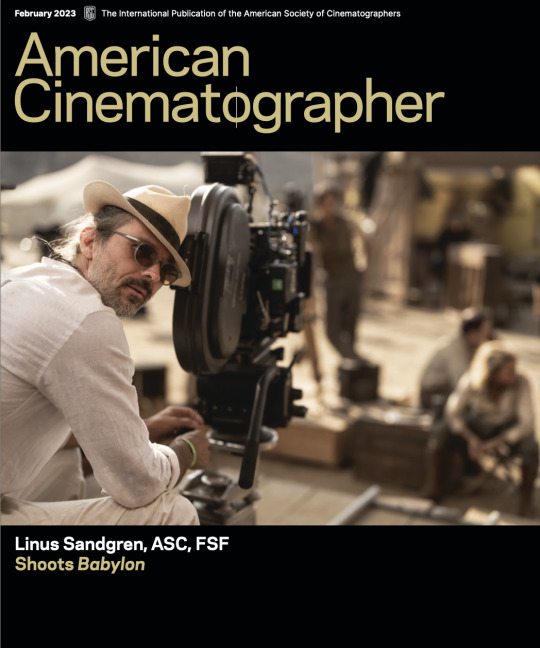

0 notes
Text
Expert Video Editing Services in Rockville, MD
Video has become an integral part of how we communicate, market, and tell stories, both on a personal and professional level. In video editor Rockville, MD, the scene is thriving with professionals who understand the power of a well-crafted visual narrative. Amid the rise of digital content, a local business looking to make a mark with its brand or a couple aiming to preserve the magic of their wedding day, finds itself in need of top-tier video editing services.
At Hope Solution, we embody the essence of visual storytelling; our team of dedicated editors works tirelessly to transform raw footage into engaging stories that resonate with audiences.
Who We Are
Our story begins with a passion for visual art and communication. Hope Solution is the leading name in the Rockville community, offering bespoke video editing services tailored to our clients' unique needs. We don't just edit videos; we curate experiences, powerful enough to leave an indelible mark on the viewer. Our team is proud to be at the forefront of the local video editing scene, bringing creativity, precision, and a touch of local flavor to every project we undertake.
What We Offer
Hope Solution provides a suite of video editing services that cater to various domains, ensuring your message stands out. By employing the latest technology and techniques, we elevate your video content to its highest potential. Here's a glimpse of the video editing services we offer.
Basic Editing Services
For those seeking simplicity yet impactful storytelling, our basic editing services cover a wide range of fundamental video enhancements. With services like:
Video Trimming and Organization
Background Music and Voice Overlay
Color Grading and Correction
Captioning
Our basic editing package turns your raw footage into a streamlined visual message, ready for its debut.
Corporate Video Production
In the corporate world, a well-produced video can be the difference between being noticed and being left behind. Our corporate video editing services focus on:
Product Promotion
Service Highlight Reels
Company Descriptions
We align the visual elements with your corporate vision, crafting videos that inspire confidence and engage your target audience.
Advanced Editing Services
When your vision calls for an extra touch of sophistication, our advanced editing services come into play:
Advanced Color Grading for Visual Consistency
Visual Effects Incorporation
Motion Graphics and Custom Animations
Impeccable Sound Design
With advanced video editing, we breathe life into your concepts, creating content that captivates and compels.
Filming and Documentary Editing
From filming on-site to organizing the footage in post-production, our expertise extends to a variety of filmic styles:
Commercials and Marketing Campaigns
Short Films and Documentaries
Event and Exhibition Coverages
We scale our editing to match the magnitude of your project, ensuring every detail contributes to the narrative.
Audio and Voiceover Services
The auditory component of your video is just as crucial as the visual. Our audio and voiceover editing services include:
Background Track Setting
Voice Clarity Enhancement
Timely Adjustments and Corrections
When the words and sounds need to be as clear as the imagery, we meticulously edit the audio to complement the visual elements.
Social Media Video Optimization
For the fast-paced world of social media, we offer video editing that is optimized for maximum impact across various platforms:
Short Video Creation
Trending Content Development
Engaging Visuals for Business and Personal Branding
We craft social media content that's not just a view but a share-worthy experience.
Wedding and Event Videography
Special moments in life deserve to be captured and presented with the utmost care. Our wedding and event editing services include:
Highlight Reel Storytelling
Feature-Length Video Production
Customized Editing to Reflect Personal Tastes
Whether it's a wedding, a birthday, or a concert, we ensure your memories are immortalized in a way that's both cherished and shared.
Enhancing Your Visual Presence
Hope Solution doesn't just edit videos; we work with you to enhance your visual presence. Whether you're a local business or an individual with a story to tell, our professional video editors in Rockville, MD, are your partners in presenting the best version of your narrative to the world. Contact us today to start your visual transformation.
0 notes
Text
TRANS COMING-OF-AGE SHORT FILM
WE’RE MAKING A FILM

and it's called EUFONIO PARA VIOLETA
and we would love your support / attention!
Eufonio para Violeta (Euphonium for Violet) is a 40 min. queer coming-of-age dealing with the intersections of childhood, art and gender and how they all connect to the question of who we are.

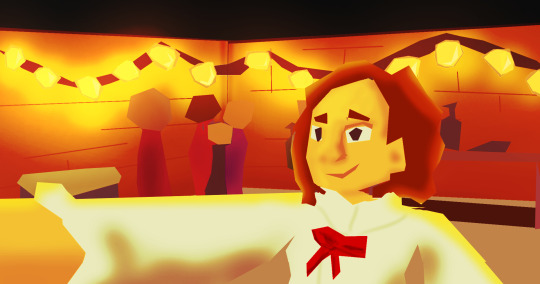
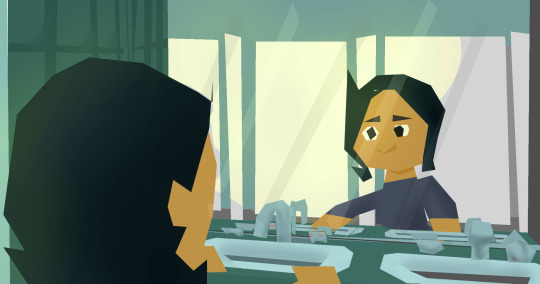
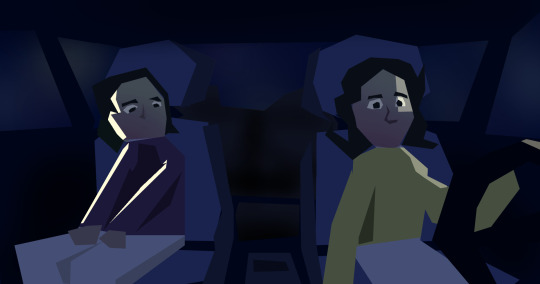
SYNOPSIS: Violeta, a young musician struggling with creation and a clarinet player since the age of 12, has never heard herself play the clarinet; instead, every time she blows a note, she hears the low, melodic tone of the euphonium. Years later, she comes across Lidia, a euphonium player, and the first trans woman she ever meets. This kickstarts a chaotic afternoon for Violeta, who explores her own sense of self and creation through the arts that surround her, her relationship with her mother, her best friend and the girl she just met; and of course, the instrument with which she makes her inner world resound.
It’s a filmic proposal that aims at highlighting the potential that art as movement has to reflect the relationship between our bodies, our names, and ourselves; evolving, only describable when it’s active, present, breathing.
To tell Violeta’s musical journey, we’re combining our synth-based extradiegetic score, arrangements and variations on two original pieces for euphonium and clarinet, and a fully choreographed folkloric composition based on the state of Oaxaca’s dance tradition.
GOAL: Not all of the funding will be achieved through crowdfunding; we're both organizing events as well as looking for sponsors, but none of it would be enough to suffice our goal budget of around 10,000 dollars. This crowdfunding campaign, as part of our plan to achieve it, is aiming at 2,000 Dollars.
WHY MAKE IT? This is a huge first step in our local industry (It’s to be the first in our state to be directed by, starring, and composed by trans women) and we need all the help we can get so that the second or third another queer artist gives is a lot easier, by hopefully strengthening the support nets in and out of the industry for new queer art.
To write it, I took the memories from the pivotal point in which I, for the first time, learned what it meant to be trans, and confronted the fact that I might feel that way; then, I structured and worked them into a story that expresses that which others often deny or doubt; I used music and dance to express my joys and fears, the stress and the relief, the moment I started sounding like myself.
This sort of translation is difficult, specially when you don't know how much of this others have felt... or rather, heard; which is precisely the point. It's a story for everyone, yes, a story about being an artist, about being named, about being itself; but of course, it's also an attempted reflection of whoever is, like me once, still waking up and ignoring that sound which is not ours, that which no one else can point out; to those who need to listen to their own timbre.
For more details on that and other updates, be on the lookout for posts on our social media as well as my personal ones!
Artenema (Our Independent Studio): instagram.com/arte_nema www.youtube.com/@artenema5202 Eufonio para Violeta https://www.instagram.com/eufonio_para_violeta/ www.youtube.com/@EufonioParaVioleta Donations:
Please share, and thank you so much if you read this! - Amanda
#short film#trans artist#queer film#crowdfunding#queer music#coming of age#lgbtqia#independent film#trans filmmaker
1 note
·
View note
Text
Blog Post 2 - Sources and Significance
The concept of realism in Japanese animation and manga is a multifaceted subject matter explored and I could relate with the realism class. In "Realism inside the Animation Media Environment: Animation Theory from Japan," Marc Steinberg investigates how realism in Japanese animation differs from traditional filmic realism. He highlights that realism in animation is not just about replicating reality however entails additionally the feeling of the location and the character they live in. This is contrasted with Disney's hyperrealism, which targets to create a heightened form of realism. Steinberg additionally introduces the idea of transmedial realism, in which anime and manga aesthetics have an effect on literature, leading to new forms of expression.

Similarly, "The Art of Anime" by way of Alex Dudok de Wit examines the inventive and cultural importance of anime, focusing on the works of Studio Ghibli's administrators, Hayao Miyazaki and Isao Takahata, and Makoto Shinkai. The article discusses how Miyazaki's fantastical narratives and Takahata's sensible storytelling targeted on social dynamics make contributions to the style's variety. And I with those articles I should relate with the magnificence approximately realism.
In "Tezuka Is Dead: Manga in Transformation and Its Dysfunctional Discourse," Itō Gō challenges the dominant historical attitude on manga, advocating for a broader know-how of its evolution and modern-day significance. Itō opinions the manga scholarship's failure to recognize postmodern factors and requires a greater inclusive approach to manga research.
Realism is conceptualized and represented in Japanese animation and manga, emphasizing the want to recognize those connections among their precise cultural and artistic contexts.

0 notes